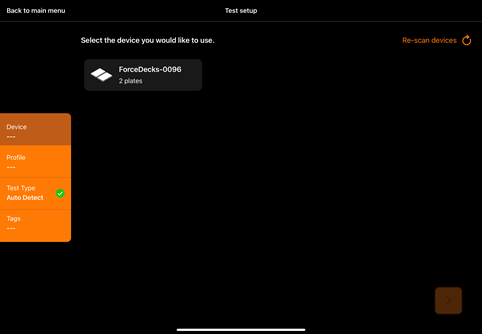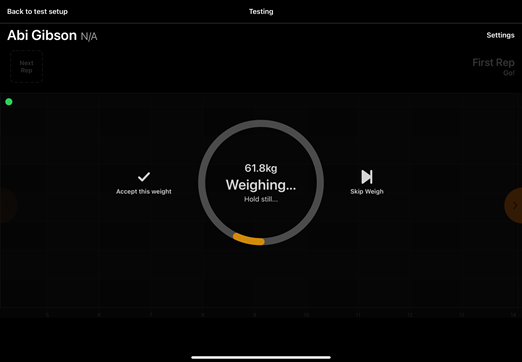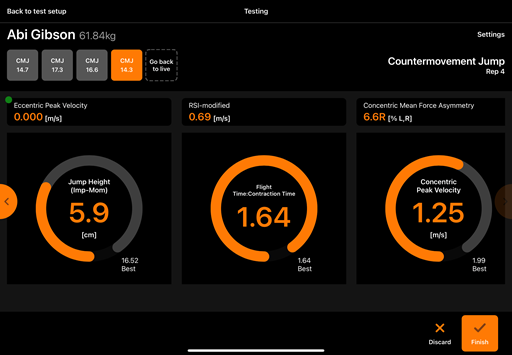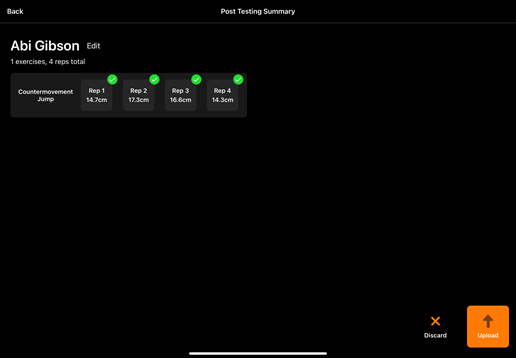Run a Test in ForceDecks iOS App
This guide covers how to run a test in the ForceDecks iOS App. If testing with ForceDecks for the first time, refer to Testing with ForceDecks.
Step 1 - Test Setup
- Go to Tests
- Ensure the ForceDecks plates are turned on, and you are located near the plates to ensure a strong Bluetooth connection. (If required, refer to Bluetooth Connection Guide.)
- Select your ForceDecks plates.

- Go to Profile
- Select a Profile
- Go to Test Type
- Select the Test Type:
- Auto-Detect – enable ForceDecks to auto-detect the test type performed.
- Pre-Select – select a specific test type to be performed (no other test types will be detected).
- Go to Tags
- Add or Manage Tags, as required.
Step 2 – Zero Force Plates
- Ensure nothing is touching the ForceDecks plates.
- Click Start to zero the ForceDecks plates.

Step 3 – Weigh Individual
- Ask the individual to assume the starting position on the plates and remain as still as possible.

If you skip weighing you can re-weigh the individual during the test recording. Learn more about Weighing Profiles in ForceDecks iOS App.
Step 4 - Recording a Test
- Instruct the individual to perform the required test movement/jump (refer to ForceDecks Test Protocols).
- Once required reps are completed, click Stop.

- Click the arrow to the right of the force trace, to view result metrics.

- Click Finish
- If required, click on tests to change test type, or reps to discard reps from results.

- Click Upload to upload tests to VALD Hub and ForceDecks.






